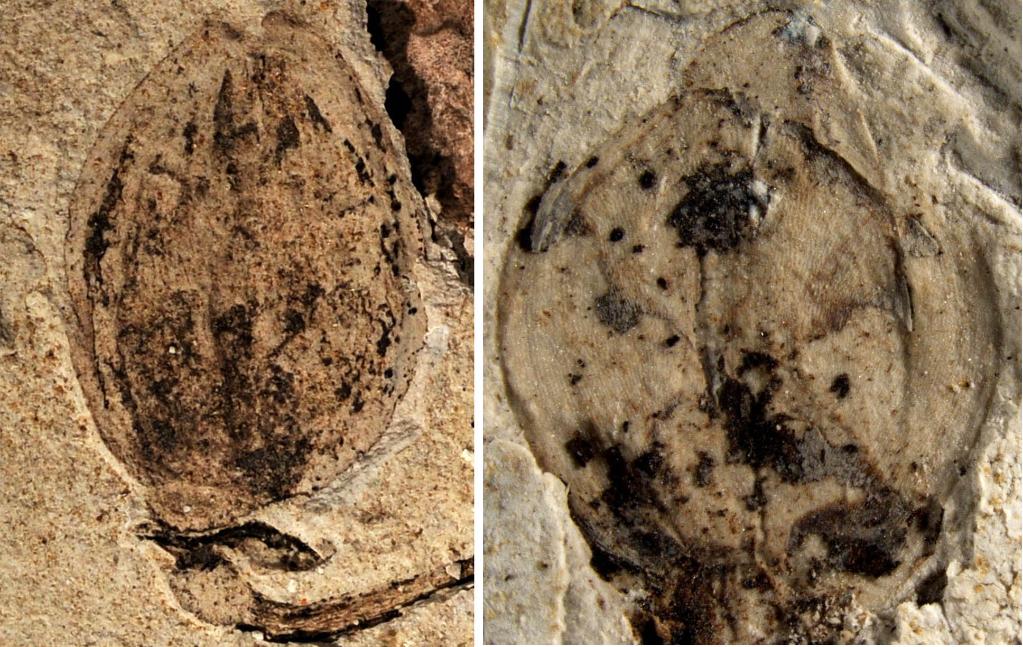World's earliest flower bud fossil found in north China

Photo provided by the Nanjing Institute of Geology and paleontology under the Chinese Academy of Sciences shows the fossil and the buried flower bud marked by an arrow. (the Nanjing Institute of Geology and paleontology under the Chinese Academy of Sciences/Handout via Xinhua)
NANJING, Feb. 16 (Xinhua) -- Chinese researchers have discovered the world's earliest fossil of a flower bud in north China's Inner Mongolia Autonomous Region.
The fossil contains a stem, a leafy branch, a bulbous fruit, and a tiny flower bud, around 3 square millimeters in size, according to Wang Xin, a researcher from the Nanjing Institute of Geology and paleontology under the Chinese Academy of Sciences in east China's Jiangsu Province.
The flower bud is less than 4 millimeters long, much smaller than a human fingernail, he said.
The fossil was found in Ningcheng County of Inner Mongolia. Scientists said the fossilized flower bud lived in the Jurassic period, about 160 million years ago.
"Although only the bud and fruit remained in the fossil, the plant must have undergone the process of flowering. That is to say, around 160 million years ago, the tiny Jurassic flower bud may have blossomed beneath the feet of dinosaurs," said Wang, who led the study.
The study has been published online in the journal Geological Society London Special Publications.

(Source: Nanjing Institute of Geology and paleontology under the Chinese Academy of Sciences)

Restoration of Jurassic environment. (Source: Nanjing Institute of Geology and paleontology under the Chinese Academy of Sciences)
Photos
Related Stories
Copyright © 2022 People's Daily Online. All Rights Reserved.










